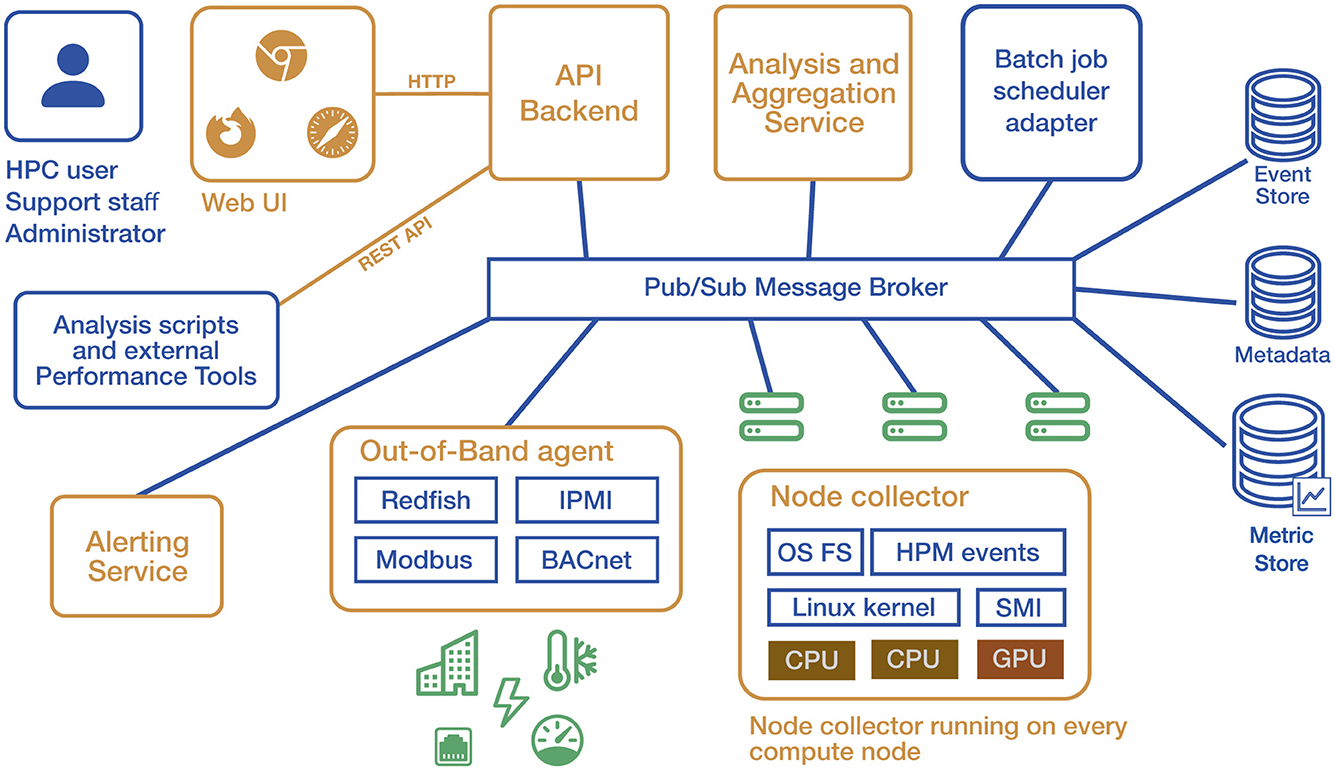Addressing AI’s Power Consumption Challenges Fujitsu’s Three Energy-Saving Technologies – Fujitsu

Report on Fujitsu’s Next-Generation CPU and its Alignment with Sustainable Development Goals
1.0 Executive Summary
Fujitsu Limited has announced the development of a next-generation CPU, the FUJITSU-MONAKA, designed to address the increasing demand for high-performance, energy-efficient computing in the AI era. Leveraging technologies from its legacy in supercomputing, including the K computer and Fugaku, this CPU is engineered to deliver superior performance for data centers while significantly contributing to global sustainability objectives. With shipments scheduled to commence in 2027, the FUJITSU-MONAKA represents a critical advancement in sustainable digital infrastructure, directly supporting several United Nations Sustainable Development Goals (SDGs).
2.0 Core Technological Innovations
The FUJITSU-MONAKA CPU integrates several proprietary technologies to achieve an optimal balance between computational power and energy efficiency. These innovations are foundational to its role in promoting sustainable industry and infrastructure.
- 3D Many-Core Architecture: The CPU employs a 3D stack structure for its semiconductor circuits. This design minimizes the physical distance data must travel, which in turn reduces latency and power consumption while increasing data throughput.
- Hybrid Semiconductor Manufacturing: A unique hybrid configuration is utilized for cost and energy optimization.
- The top die is manufactured using the latest 2-nanometer process, maximizing energy efficiency for core processing tasks.
- The bottom die uses a more cost-effective 5-nanometer process, reducing overall production costs without compromising the unit’s energy-saving capabilities.
- Low-Voltage Technology: Building on advancements from the Fugaku supercomputer project, Fujitsu has refined its low-voltage technology to further decrease the CPU’s power requirements.
3.0 Contribution to Sustainable Development Goals (SDGs)
The design philosophy and technical specifications of the FUJITSU-MONAKA CPU are intrinsically linked to advancing key SDGs, particularly those related to infrastructure, energy, and climate action.
- SDG 9: Industry, Innovation, and Infrastructure: The CPU is a cornerstone innovation for building resilient, sustainable, and inclusive digital infrastructure. By providing high-performance computing with a lower energy footprint, it enables the development of advanced AI and data processing capabilities essential for modern industry without overburdening energy systems.
- SDG 7: Affordable and Clean Energy: The primary focus on energy efficiency directly supports the goal of ensuring access to affordable, reliable, and sustainable energy. Data centers are significant consumers of electricity; deploying energy-efficient CPUs like the FUJITSU-MONAKA on a large scale can substantially reduce the overall energy demand of the digital economy.
- SDG 13: Climate Action: By reducing the electricity consumption of data centers, the CPU helps mitigate the carbon footprint of the technology sector. Lower energy demand translates directly to reduced greenhouse gas emissions, contributing to urgent action to combat climate change.
- SDG 12: Responsible Consumption and Production: The CPU promotes more sustainable production and consumption patterns. Its energy efficiency reduces resource consumption during its operational life, while the hybrid manufacturing process demonstrates a more responsible approach to utilizing advanced semiconductor resources.
4.0 Conclusion and Future Outlook
The FUJITSU-MONAKA CPU is positioned as a pivotal technology for the future of computing. Its successful integration of high performance and low power consumption provides a clear pathway for the technology sector to grow responsibly. As data centers become increasingly integral to the global economy, such innovations are essential for ensuring that technological progress aligns with the imperative for environmental sustainability and the achievement of the Sustainable Development Goals.
1. Which SDGs are addressed or connected to the issues highlighted in the article?
- SDG 7: Affordable and Clean Energy: The article’s central theme is the development of a CPU that balances “high performance and energy efficiency.” This directly addresses the need to reduce energy consumption in high-demand sectors like data centers.
- SDG 9: Industry, Innovation and Infrastructure: The text describes a significant technological innovation—the “FUJITSU-MONAKA” next-generation CPU. This innovation is aimed at upgrading critical infrastructure (data centers and supercomputers) to be more efficient and sustainable, which is a core component of SDG 9.
- SDG 12: Responsible Consumption and Production: The article touches upon achieving “energy savings and cost reductions through a hybrid configuration.” This approach, using different semiconductor processes (2nm and 5nm) to optimize resource use, aligns with the goal of more sustainable production patterns and efficient use of resources.
2. What specific targets under those SDGs can be identified based on the article’s content?
SDG 7: Affordable and Clean Energy
- Target 7.3: By 2030, double the global rate of improvement in energy efficiency. The article’s focus on creating “high-performance and energy-efficient computing” and advancing “low-voltage technology” directly contributes to improving energy efficiency in the rapidly growing IT sector.
SDG 9: Industry, Innovation and Infrastructure
- Target 9.4: By 2030, upgrade infrastructure and retrofit industries to make them sustainable, with increased resource-use efficiency and greater adoption of clean and environmentally sound technologies and industrial processes. The development of an energy-efficient CPU is a “clean and environmentally sound technology” designed to make data center infrastructure more sustainable and resource-efficient.
SDG 12: Responsible Consumption and Production
- Target 12.2: By 2030, achieve the sustainable management and efficient use of natural resources. The CPU’s design, which uses a “hybrid configuration” of 2nm and 5nm processes to achieve “both energy savings and cost reductions,” demonstrates a move towards more efficient use of manufacturing resources and energy.
3. Are there any indicators mentioned or implied in the article that can be used to measure progress towards the identified targets?
- Implied Indicator for Target 7.3: While not stating a specific number, the article implies progress towards Indicator 7.3.1 (Energy intensity). The development of technologies like the “3D stack structure” that “minimizes data movement” and the use of a “2-nanometer process for high energy efficiency” are direct measures to reduce the amount of energy required per computational task, thus lowering the energy intensity of data centers.
- Implied Indicator for Target 9.4: The article’s emphasis on “energy savings” implies a reduction in greenhouse gas emissions, which is related to Indicator 9.4.1 (CO2 emission per unit of value added). By reducing the energy consumption of data centers, the technology helps lower the CO2 emissions associated with the “value added” by computing services.
- Implied Indicator for Target 12.2: The description of the manufacturing process serves as a qualitative indicator of efficient resource use. The choice to use a “cost-effective 5-nanometer process” for the bottom die while reserving the “latest 2-nanometer process” for the top die is a specific strategy for sustainable management of advanced and costly manufacturing resources.
4. Create a table with three columns titled ‘SDGs, Targets and Indicators’ to present the findings from analyzing the article.
| SDGs | Targets | Indicators |
|---|---|---|
| SDG 7: Affordable and Clean Energy | Target 7.3: Double the global rate of improvement in energy efficiency. | Implied Indicator (related to 7.3.1): Reduced energy intensity of computing, achieved through “high energy efficiency” designs like the “2-nanometer process” and “low-voltage technology.” |
| SDG 9: Industry, Innovation and Infrastructure | Target 9.4: Upgrade infrastructure and retrofit industries to make them sustainable. | Implied Indicator (related to 9.4.1): Reduced CO2 emissions per unit of computation, resulting from “energy savings” in data center infrastructure. |
| SDG 12: Responsible Consumption and Production | Target 12.2: Achieve the sustainable management and efficient use of natural resources. | Implied Indicator: Efficient resource management in manufacturing, demonstrated by the “hybrid configuration” of 2nm and 5nm processes to balance cost, performance, and energy use. |
Source: global.fujitsu

What is Your Reaction?
 Like
0
Like
0
 Dislike
0
Dislike
0
 Love
0
Love
0
 Funny
0
Funny
0
 Angry
0
Angry
0
 Sad
0
Sad
0
 Wow
0
Wow
0

































































![Lancaster homeowner’s energy-efficient renovation sparks clash over historic preservation [Lancaster Watchdog] – LancasterOnline](https://bloximages.newyork1.vip.townnews.com/lancasteronline.com/content/tncms/assets/v3/editorial/9/ed/9ed03d32-c902-44d2-a461-78ad888eec38/69050b156baeb.image.png?resize=150,75#)






